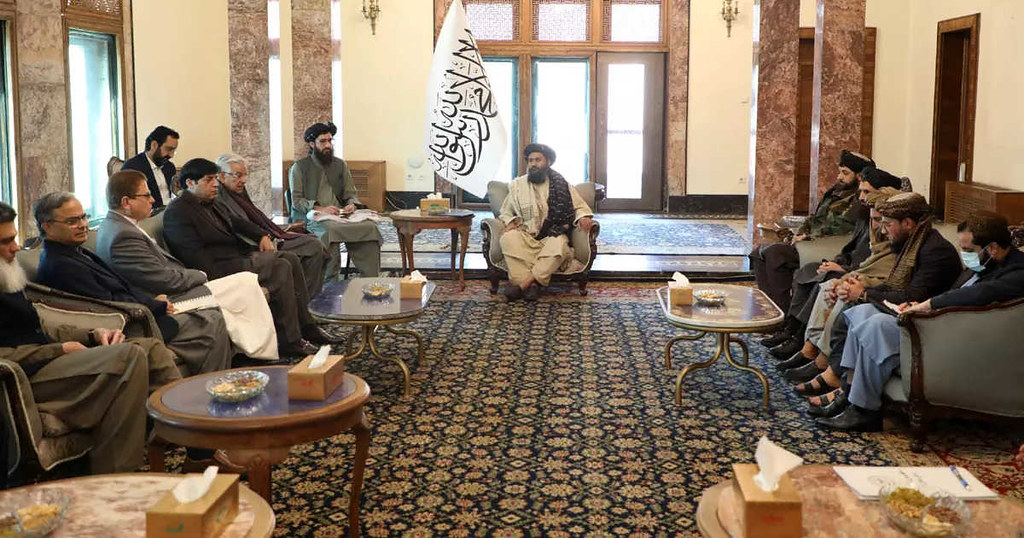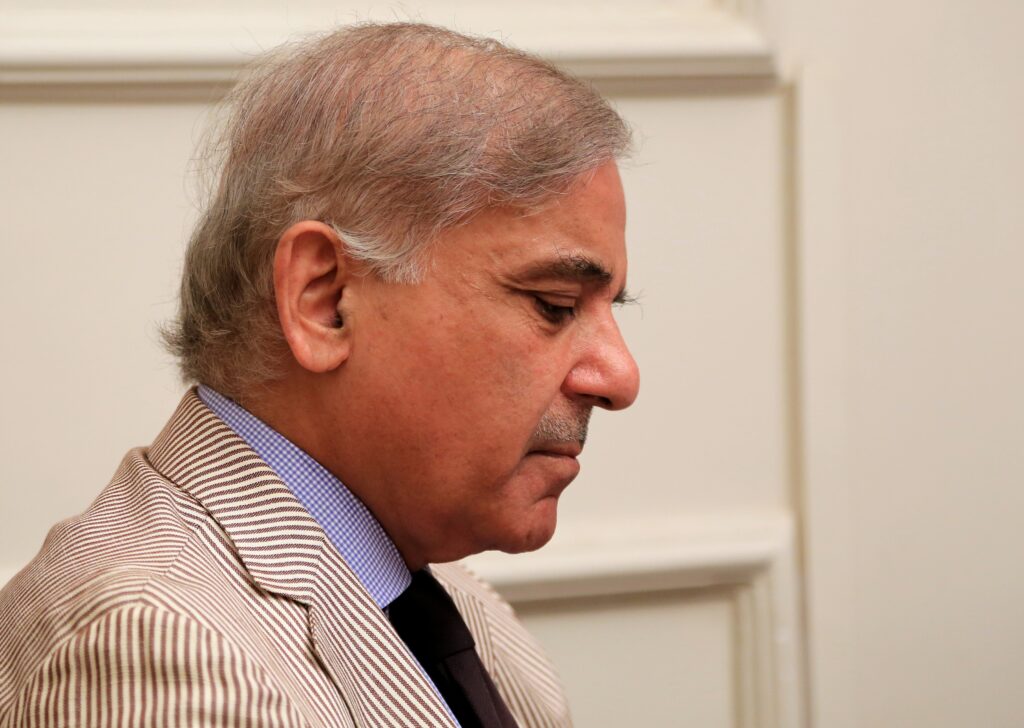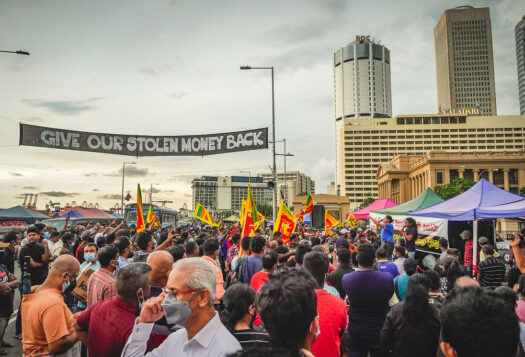
Pakistan faces a resurgent wave of militancy, and Islamabad’s previous gains against it are at risk. Against this backdrop, a controversial election season marked by militant violence came to an end. In the past few weeks, attacks on election campaigns, candidates from Pakistan Tehreek-e-Insaf (PTI), Awami National Party (ANP), Jamiat Ulema-e-Islam-Fazl (JUI-F), Pakistan People’s Party (PPP), and government installations in Balochistan served as a reminder of the continued threat that terrorists pose.
Since 2022, Pakistan has confronted a persistent spike in terror attacks. Militant and terror attacks increased by 69 percent, peaking in 2023, the highest they’ve been since 2017. While various groups ranging from religious extremists to ethno-nationalist separatists conducted terror attacks during 2023, three groups alone mounted over 82 percent of these attacks: Tehreek-e-Taliban Pakistan (TTP), Islamic State-Khorasan Province (ISKP), and the Balochistan Liberation Army (BLA). The general elections prompt questions about the future of Pakistan’s counterterrorism strategy in light of the escalating number of attacks. After over a decade of counterterrorism operations, what options remain available to Pakistan to reverse this trend? This article outlines why policy coordination between the federal and provincial governments in Khyber Pakhtunkhwa and Balochistan must move forward immediately to stem the rise in attacks.
Troubling Troika: TTP, ISKP, and Baloch Militancy
The pattern of recent attacks indicates that multiple terror groups are motivated and capable of launching attacks not only on security forces but also on political parties across the spectrum. ISKP claimed an attack on the PTI election rally in Sibi in January, TTP killed ten police officers in Dera Ismail Khan, and Baloch separatists killed six and injured three people in simultaneous attacks in the province. As news of such attacks piles up, the incoming government will be pressured to reign in the threat of militancy.
After a lull in activity between 2017 and 2021, TTP is again a security priority for Pakistan. Between 2014 and 2017, Pakistani security forces’ counterinsurgency efforts displaced the TTP from the former Federally Administered Tribal Areas and the group struggled to consolidate its factions. A recent report by the UN claims that the de facto Afghan Taliban government is offering support and a safe haven to al-Qaeda and TTP, enabling the TTP to organize its command structure and regroup largely out of reach of Pakistani authorities.
As the coalition government and opposition continue to quarrel over allegations of electoral fraud, Pakistan will be under increasing pressure to reign in the threat of militancy beyond cross-border strikes.
There are also reports of ISKP operating out of Afghanistan. While the Taliban’s crackdown appeared to result in a decrease in ISKP attacks, the Taliban remain dismissive of concerns put up by Pakistani officials, and the group continues to pose a serious threat inside Pakistan.
Until the recent exchange of strikes between Pakistan and Iran, anti-Pakistan Baloch separatists’ presence in Iran was not only geopolitically expedient to Tehran – to compel Islamabad to act against anti-Iran Baloch militants – but it may have offered a sense of impunity. Nonetheless, it is still too early to tell if Pakistan’s recent strikes in response to Iran and Afghanistan could cause militant groups to infer that their impunity in these areas may be short-lived.
As the coalition government and opposition continue to quarrel over allegations of electoral fraud, Pakistan will be under increasing pressure to reign in the threat of militancy beyond cross-border strikes. Pakistan’s internal security, and its ability to project stability externally, will largely depend on whether the federal and provincial governments can reach a consensus on multiple policy issues despite electoral divisions, most crucially counterterrorism.
Pakistan’s Post-Election Order Has Implications for the Growing Threat of Militancy
Recent election outcomes added more confusion than clarity to the government’s ability to navigate complex policy issues. From allegations of pre-poll rigging and mobile internet disruption on election day to reports of electoral fraud by officials from the Election Commission of Pakistan (ECP), February 8 was politically polarizing. PTI candidates, who were forced to contest as independent candidates after a Supreme Court Judgement, swept the election in Khyber Pakhtunkhwa (KP) and claimed victory in the capitol and surrounding districts, Punjab, and in parts of Sindh, especially Karachi.

Yet, the controversial results leave a confusing situation in the capital as the ECP awarded seats to Pakistan Muslim League-Nawaz (PML-N) and Pakistan People’s Party (PPP) in Punjab and Karachi. Despite contentious election results, PML-N, PPP, Pakistan Muslim League-Quaid (PML-Q), and Balochistan Awami Party (BAP) have joined hands to reincarnate a Pakistan Democratic Movement (PDM) coalition government. The PTI, opposed to the current federal government, has formed a provincial government in KP. Even though Prime Minister Shehbaz Sharif and KP Chief Minister Ali Amin Gandapur agreed to implement policy on center-province fiscal issues smoothly, the overall relationship between the PTI and the federal government remains confrontational.
In this pervasive climate of political uncertainty, Pakistan’s long-anticipated stability will be out of reach. A weak government will be preoccupied with consolidating its ranks and have an uncoordinated approach to fighting terrorism, especially in KP. In this situation, federal and provincial leaders will likely lack the incentive to coordinate on fiscal and strategic issues that could support an effective response to militancy, such as funding the local police force to support military-led counterterrorism efforts and aligning their negotiation strategies.
Aligning Counterterrorism Strategies: Development and Negotiation
The PML-N and PPP-led government in the center and the PTI government in KP will find common ground on the fundamental importance of kinetic options to combat terrorism, but it is crucial that they coordinate their approach. The PDM government appears to favor a strategy that solely relies on counterterror and intelligence operations. While the PTI has not issued any specific statements on its counterterrorism strategy in its 2024 manifesto, the PTI has favored a coercive approach towards militancy as both a coalition and provincial government, pursuing peace talks with TTP factions willing to surrender arms. After resettling militants without a clear plan, the PTI-led coalition government’s peace talks failed, and the same militants started targeting security forces. Without a mutually agreed upon strategy, counterterrorism efforts will again fail and lack follow-through on the local level.
Previous cases of uncoordinated responses to terrorism in Pakistan’s history demonstrate that strategic alignment between the federal and provincial governments is essential to developing an effective counterterror policy. In 2008, before the Swat counterterror operation, the PPP-led coalition government and its ally Awami National Party (ANP) in KP adopted a confused approach to countering the threat of terrorism. Despite launching a successful federal government-supported operation against TTP in Swat and South Waziristan, the provincial ANP government concluded a poorly negotiated truce with a militant group in Swat, which ultimately collapsed. If political allies have mishandled their coordination in the past, the current federal and provincial governments must concentrate on avoiding similar pitfalls.
The KP government will likely resist the federal government’s decision to deploy a kinetic counterterrorism strategy unless the center supports KPTD capacity-building.
Another area where these differences might culminate is in governance mismanagement. Improving governance should be a priority for the KP government to deny influence to militants, especially in the Khyber Pakhtunkhwa Tribal Districts (KPTDs). Ultimately, the KP government will be the first to face backlash from violent militant attacks, and will have an additional responsibility to prevent or respond to such attacks. To do so, the KP government needs the federal government to deliver the capacity-building funding previously promised to the KPTDs for infrastructure, governance, and security forces. Therefore, the KP government will likely resist the federal government’s decision to deploy a kinetic counterterrorism strategy unless the center supports KPTD capacity-building. With the PTI now in the opposition, the KP and federal government are bound to involve political rivalry in resource allocation, which may lead to a deadlock and have direct bearing on KP’s ability to improve its governance capacity and counter the threat of TTP.
Separatist militant groups in Balochistan continue to thrive, rejecting the mainstream political process since participation would lend credence to Pakistan’s constitutional framework. Nationalist political parties, which offer a bridge between the local identity and Pakistan’s center, have been unable to form a critical mass of the provincial polity. Balochistan, where the PPP retains provincial control, is rife with recurring protests against alleged electoral fraud and enforced disappearances. Nationalist and federal-based political parties lack public support for a number of reasons: continuing to rely on electables, configuring the province only through a security lens, dismal governance and public service infrastructure, and discontinuing the Aghaz-e-Haqooq-e-Balochistan reforms package that aimed to address the root causes of governance and insecurity in the province. Unless nationalist and federal-based political parties engage in transparent electoral politics, revive the Aaghaz-e-Haqooq reforms, and open a dialogue aimed at militant groups amenable to peace and normalcy, then stability in the province will remain elusive.
Under such circumstances, in line with the strategy of the previous PDM government, the current federal government is not likely to take a multi-pronged approach to attempt to gain the upper hand over militant actors without entering into negotiations. While intelligence and counterterror operations are of course essential, sustainable policy options to deal with militancy will entail looking beyond unending cycles of kinetic action. This necessitates directing resources toward improving health services, education, and law and order. Furthermore, plans to restructure the bureaucracy and engage with constituents to find common ground toward durable peace in Balochistan and the KP tribal districts would be a promising start. Finally, provincial and federal governments must coordinate counterterror strategies, allocate funding to local security forces, and look past political rivalry to prioritize the end goal of stemming the militancy and instability that has plagued Pakistan for decades.
The federal government must inspire confidence in its mandate to govern at home and project strength and stability externally. Overcoming the complex threat of militancy remains a difficult path forward, but the first step must be sincere policy coordination between the federal government and provincial governments of Khyber Pakhtunkhwa and Balochistan.
Also Read: Striking Back: Is Pakistan Putting Military Strikes on the Table?
***
Image 1: The Pakistani Government meeting with the Taliban after TTP attacks via Flickr.
Image 2: Prime Minister Shehbaz Sharif via Wikimedia Commons.


